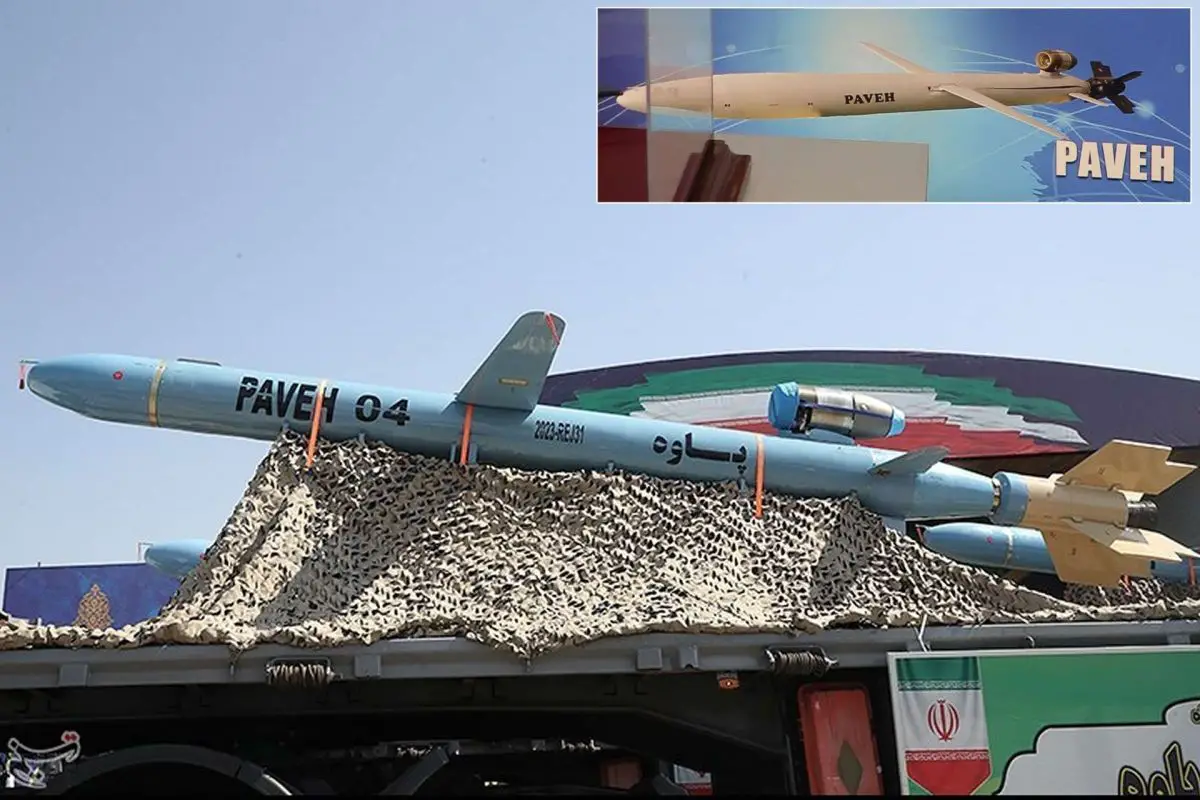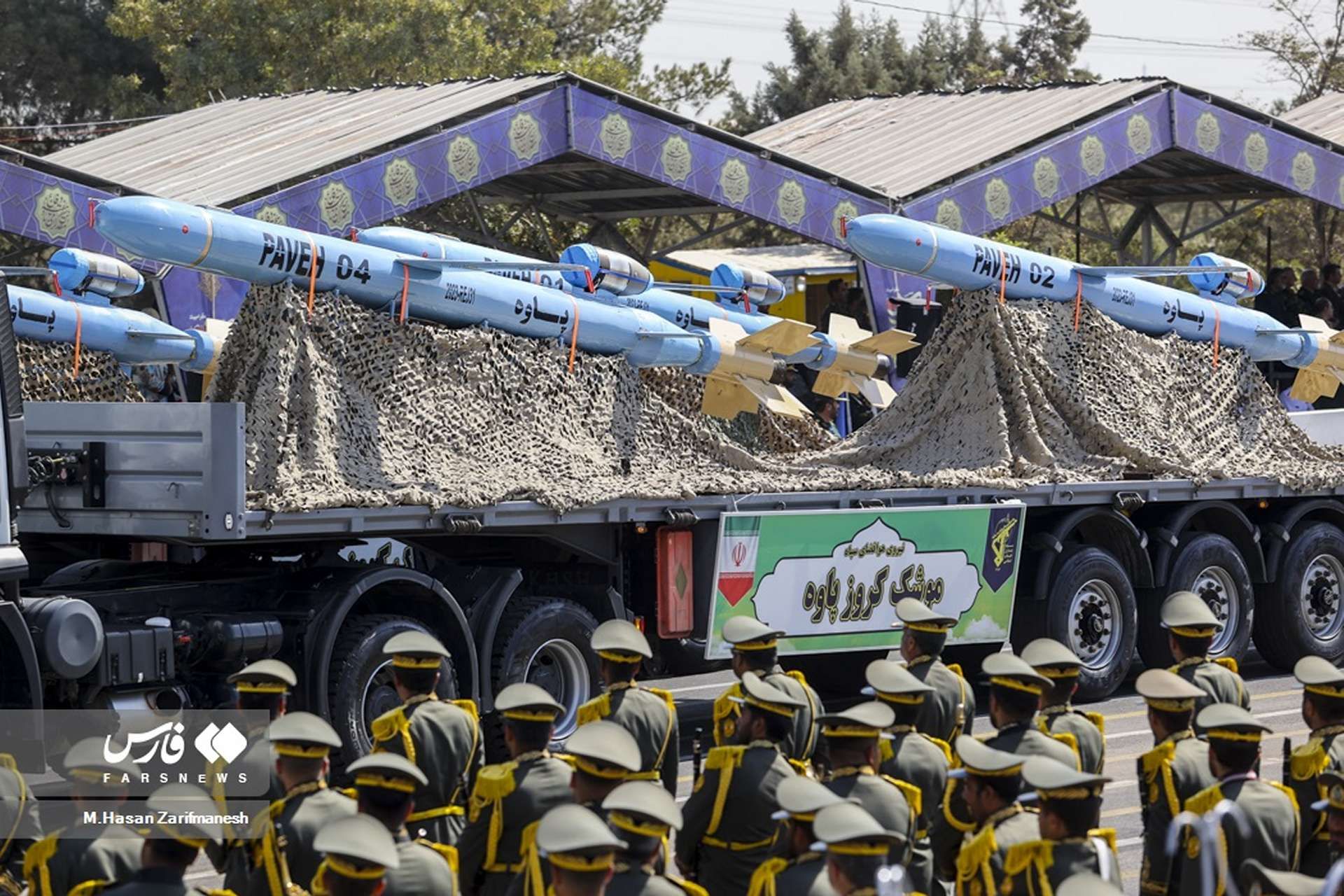Breaking News
Is Iran ready to export Paveh long-range cruise missiles to Russia?.
As Yuri Lyamin noted on August 17, 2024, Iran has recently begun advertising its Paveh cruise missile for export at the Russian Army-2024 exhibition. Developed and produced by Iran's Revolutionary Guards, the Paveh missile is a long-range surface-to-surface strategic cruise missile. It is the latest in a series of developments within the Soumar cruise missile family, which has seen incremental improvements in range and capabilities since the first model was introduced in 2015.
Follow Army Recognition on Google News at this link

Publicly unveiled on February 2, 2023, and now proposed for export at Russia's Army-2024, the Paveh missile represents a further advancement in Iran’s missile technology, having a range of 1,650 kilometers (approximately 1,030 miles). (Picture source: Tasmin and Michael Jerdev)
Publicly unveiled on February 2, 2023, the Paveh missile represents a further advancement in Iran’s missile technology. It has a range of 1,650 kilometers (approximately 1,030 miles), enabling it to reach distant targets. The missile is equipped with a turbojet engine mounted externally on the upper part of its body, a design feature that differentiates it from other models in the Soumar family. Additionally, the missile features retractable wings, designed to improve its aerodynamic efficiency and stability during flight.
A notable capability of the Paveh missile is its ability to take alternative paths to its target, which may complicate efforts to intercept it. This maneuverability allows the missile to adjust its trajectory during flight, potentially evading defensive measures and approaching the target from unexpected directions. The Paveh is also designed to operate in coordinated groups, with the ability to communicate with other missiles in flight. Within such formations, one missile can assume a leadership role, guiding others and potentially sacrificing itself to ensure the mission's success.
The Paveh missile is part of a broader initiative by Iran to enhance its long-range strike capabilities. This effort began with the introduction of the Soumar cruise missile, which initially had a range of 700 kilometers. Subsequent advancements led to the unveiling of the Hoveyzah missile in 2019, which extended the range to over 1,350 kilometers. The Paveh missile now extends this range further, capable of targeting locations as far away as Israel, a point that has been noted by Iranian media.

The Paveh missile now extends Iran's missile ranges further, capable of targeting locations as far away as Israel, a point that has been noted by Iranian media. (Picture source: Fars News)
The introduction of the Paveh missile to the international arms market occurs amid rising tensions in the Middle East. In April 2024, Israeli fighter jets conducted an airstrike on the Iranian consulate in Damascus, resulting in the destruction of the building and the deaths of several Iranian military advisors. In response, Iran launched missile and drone strikes against Israel on April 13, 2024, targeting a military base believed to have been the source of the Israeli attack. The Paveh missile was reportedly used in this operation, demonstrating its operational capabilities in a combat scenario.
The export of the Paveh missile is part of Iran's efforts to establish itself as a participant in the global arms market, particularly in the area of missile technology. By showcasing the Paveh at the Russian Army-2024 exhibition, Iran is indicating its intention to expand its influence and build relationships with countries interested in improving their strategic capabilities, particularly in regions experiencing ongoing conflicts, such as Russia.
Iran's defense exports to Russia have seen significant growth, especially since the start of the conflict in Ukraine. This relationship has moved from a transactional partnership to a more strategic collaboration. At the Russian Army-2024 exhibition, Iran not only displayed the Paveh cruise missile but also other military technologies, signaling the deepening military ties between the two nations. The participation of a prominent Iranian delegation at the event underscores the importance of this cooperation, with both countries aiming to enhance their defense collaboration amidst ongoing Western sanctions.

The Paveh cruise missile was also used by Iranian proxies in Iraq, although at least one of them failed to launch it. (Picture source; US Central Command)
Iran’s defense exports to Russia have included advanced drones, such as the Shahed series, which have been used by Russian forces in Ukraine. In exchange, Iran is reportedly seeking Russian air defense systems, such as the S-400, to strengthen its defenses against potential threats from Israel and the United States. Additionally, there are indications that Russia might assist Iran in improving its long-range strike capabilities and asymmetric warfare strategies, including the development of more advanced missiles and naval technologies.
This growing defense cooperation between Russia and Iran is viewed as a strategy by both countries to navigate Western sanctions and reinforce their military capabilities in the face of international challenges, which also included the delivery by Russia of the Murmansk-BN electronic warfare system to counter Israeli F-35I stealth fighters.


























